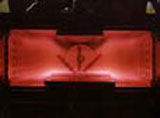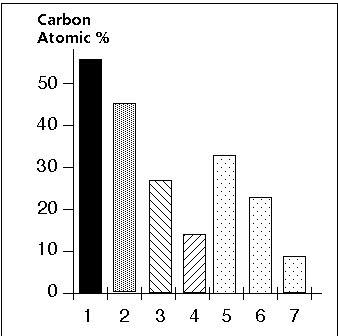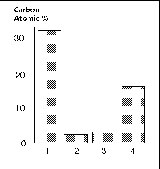Following industrial treatment, virtually any surface will be contaminated and will have to be cleaned. Increasing technical demands for substrate surface quality, for example in preparation for high-quality coatings, require microscopically clean surfaces from which all monomolecular layers have been removed. This is, for example, an essential prerequisite for good adhesion.
Attractive solutions to this problem can be found through plasma ultrapurification, developed a number of years ago and since refined by Fraunhofer IGB.
Plasma ultracleaning of metal surfaces
Principle

In a low-pressure plasma, the parts to be purified are exposed in a vacuum chamber at pressures of about 0.1 to 2 mbar to a plasma, that is to say a partially ionized gas. Through the effect of the proportion of gas particles in the plasma gas, which are much more reactive than gases in the normal state, impurities are reactively removed from the surface.
IGB has carried out comparative investigation of a variety of types of plasma reactors (an example of a laboratory setup is shown in the following figure), which differ for example by the nature of the plasma generation. An important aspect for samples which are sensitive to radiation or electromagnetic fields, for example electronic components, is the possibility of a down-stream process, in which the samples can be placed outside the compartment where the plasma is excited.
Advantages
Plasma ultracleaning offers a number of advantages over conventional cleaning methods:
- comprehensive degreasing
- low treatment temperature
- low residual cleaning agents
- good cavity penetration
- no drying necessary
- suitable for all materials
- easy-to-control process
- environmentally friendly
- little or no waste
- workplace-compliant
- low operating costs.
Limitations
As an all-in-one treatment, plasma ultrapurification is, however, unsuitable for:
- particulate impurities such as swarf or metal flakes
- a number of inorganic impurities, for example salts or fingerprints
- thick layers of contamination, for example in the case of heavily oiled parts or oil-filled bores.
In cases such as these, the parts must be precleaned, for example with aqueous or hydrocarbon-based agents.
Comparison between different purification methods

By way of example, Figure 2 shows a comparison between different methods for cleaning steel in terms of the removal of carbon. The values were determined using ESCA (Electron Spectroscopy for Chemical Analysis). The best purification is achieved by combinations of precleaning and plasma ultrapurification. If extremely clean surfaces are desired, plasma-assisted processes which permit minimization to below 10 percent residual carbon are appropriate.
Rapid recontamination

Systematic studies show that, depending on storage conditions, freshly purified samples become recontaminated by adsorption of molecules from the gas phase. This is shown in the figure below. The intervening storage time should therefore be as short as possible.
Cavity penetration
For many products which are to be technically purified, purification must also take place in bores, vorners and undercuts. Fraunhofer IGB has been able to show that plasmas containing oxygen penetrate cavities better than plasmas containing hydrogen. As may be expected, the quality of the purification depends on the cavity depth. Oxygen plasmas still have a purifying effect even in gaps which are a few centimetres deep (width 6 mm; height 0.5 mm).
Facilities/Systems
Both commercial systems and ones built in-house are available at Fraunhofer IGB. The excitation frequencies used are kHz and MHz (radio) or GHz (microwave) frequencies. Both plasma diagnosis methods and surface analysis methods are employed for process optimization.
Our services
- Optimizing existing purification processes
- Developing new methods
- Carrying out cleaning trials
- Market analysis
 Fraunhofer Institute for Interfacial Engineering and Biotechnology IGB
Fraunhofer Institute for Interfacial Engineering and Biotechnology IGB